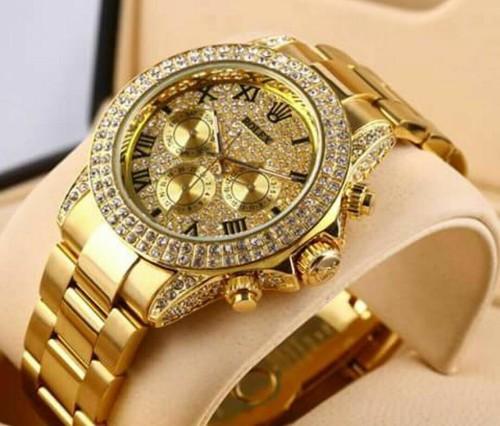Speak with a watch purist and he’ll tell you why he often dislikes diamond watches: too bling-bling, unnecessary aesthetics, overpriced, and sometimes just a cover for cheaply made fashion watches.
The general rule to finding a nice diamond watch is balance. The size, color and the way the stones integrate the watch will matter the most.
If you’re wearing a diamond watch, you’ll surely draw some eyes. So be sure the watch you’ll be choosing will be representative of your image and will transmit the message you intend.
1 – Diamond provenance
- I’m sure you’ve probably seen the movie Blood Diamond. If you haven’t, then you know what to rent on VoD this evening.
Like on the movie, blood or conflict diamonds are a reality. - Dictators and military juntas still force people to work in horrible conditions, deep inside mines with no ventilation or even security.
- Buying a blood diamond or a derived product may seem tempting: the quality may be the same and it will most likely be cheaper, but you’ll wear that watch for the rest of our life, and one day maybe your sons will too. Do you really want to think about the people who died or suffered to collect the diamonds in it? For me, it would just ruin the feeling.
- To avoid buying blood diamonds, be sure to ask for the provenance certificate from the watchmaker. Avoid diamonds from countries such as Angola, Zimbabwe, Ivory Coast, Liberia and Republic of the Congo. If you’re unsure of a blood diamond location, use google.
- These locations, as well as proxy countries, can be easily found.
2 – How to choose diamonds
Choosing a diamond it’s not an easy task. Luckily you’re not buying a diamond by itself, but a watch with diamonds, so part of the task has already been done by the watchmaker.
Take some time to read the watchmaker diamond choosing policies.
To make things short, there are essentially 4 things to look for in a diamond. Experts call them the 4 C’s:
Cut
The history of diamond cuts can be traced back to the late middle age. Before that, diamonds were used in their natural octahedral form, and diamonds with stranger forms were simply discarded.
An art on its own, cutting diamonds is a very complex task. There are dozens of different cuts (round, princess, oval, marquise, pear …) which can be divided essentially into brilliant cuts, step cuts and mixed cuts.




